
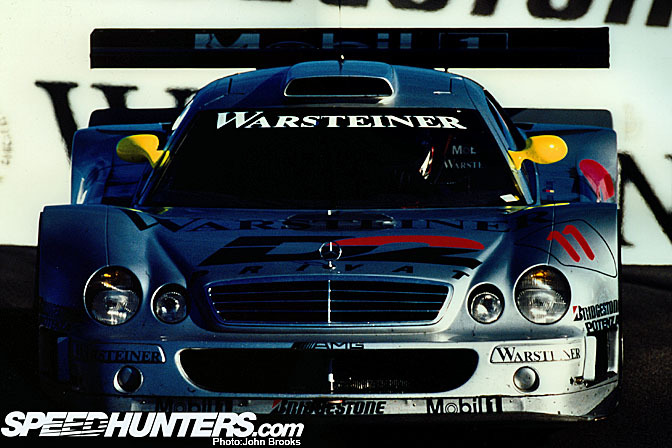
When contemplating our lives, personally and professionally, there are areas that all of us prefer not to dwell on. Failures, accidents, disasters are generally airbrushed out of our memories and our CVs, the past is held to be a happy place
Corporate bodies are no different, being essentially an extension of human activity, so it should come as little surprise that a car as successful as the AMG Mercedes Benz CLK GTR and its successors is, for the most part, ignored by its parent. There is virtually no mention of the very successful sportscar campaigns of 1997 to 1999 in the otherwise comprehensive and excellent press records of Daimler Benz. That alone draws attention to the omission.
And yet the story is one worth telling………………….
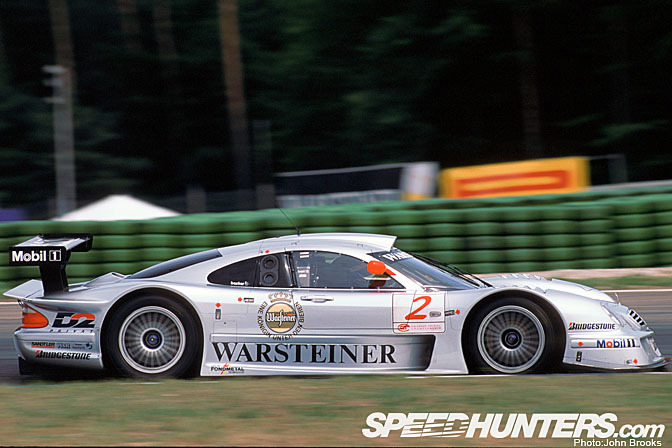
Two FIA GT Championships for both Drivers and Teams is a record to be proud of. AMG Mercedes saw off opposition as strong as Porsche and BMW along the road to victory.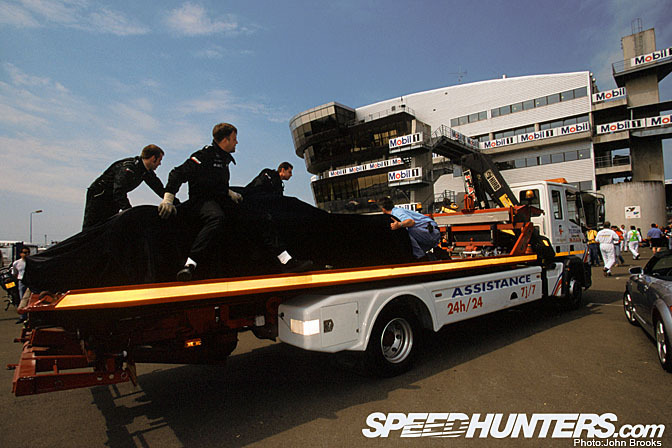
Yet what most of us instantly recall about the Mercedes' sportscar efforts of the time are the endless re-runs of Peter Dumbreck's CLR taking to the skies and landing in the trees during the course of the 1999 Le Mans 24 Hours. It was an ignominious ending to a top line programme and the embarrassment is still keenly felt today in Stuttgart. It was not the first time that a Mercedes Benz had left the track at Le Mans. Back in 1955 an accident involving Pierre Levegh's Mercedes resulted in his 300 SLR hitting a bank along the main pit straight. The debris flew into the packed crowd and 82 people were killed and scores injured. At least in 1999 there were no casualties and Peter is still racing……………….it could have been infinitely worse.
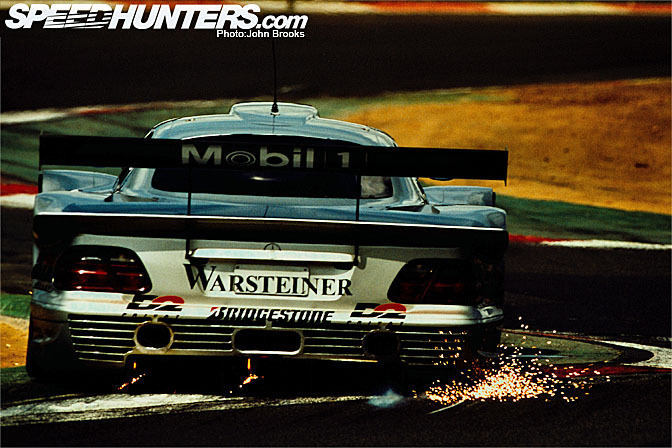
So how did this odyssey start? As with most things in the sport Bernie Ecclestone had more than a passing influence in the proceedings. There was back in the early 90s the original DTM race series. It featured very high tech and expensive cars that had replaced the original Group A machines. Four wheel drive, carbon chassis, full electronic wizardry, the series was very popular, so much so that it became a victim of its own success. Prospering in the vacuum for top line, non-F1 racing created after the demise of Group C and Endurance Racing, the budgets rocketed as did the ambition of those involved.
In 1995 a new competition was launched to bring an cosmopolitan flavour to the strictly German DTM. The International Touring Car Series added ten rounds to the fourteen races in Germany. The following year the two were consolidated into the FIA International Touring Car Championship or ITC. Then the problems began. The revenue streams were increasingly diverted to the FIA (aka Bernie) who also racked up the price of television coverage, to the point where it was dropped in several countries. Rounds in far flung destinations such as Brazil and Japan, where neither Alfa Romeo nor Opel sold cars, added to the costs while the income dropped. Spectators who had revelled in the free and easy atmosphere of the DTM paddocks, with unrivalled access to the teams and drivers, now found big hikes in tickets prices combined with F1-style security. They stayed away in droves and who could blame them?
To no one's great surprise Alfa and Opel ended their participation at the end of 1996, which left Mercedes Benz with nowhere to race and no one to race with.
At the same time the success of the BPR Global Endurance Series during the 95 and 96 seasons stood out like les ballons du chien and so a deal was concocted. B & R would leave P and join the FIA to create the FIA GT Championship and the main casualty of the demise of the ITC would have a stage to perform on. Bernie had conjured up his magic and helped his F1 client Mercedes out of a hole, those of us who watched Group C being assassinated were not shocked. Oh and he made a profit on the deal, you can only admire such artistry.
"Truly, for some men nothing is written unless they write it."
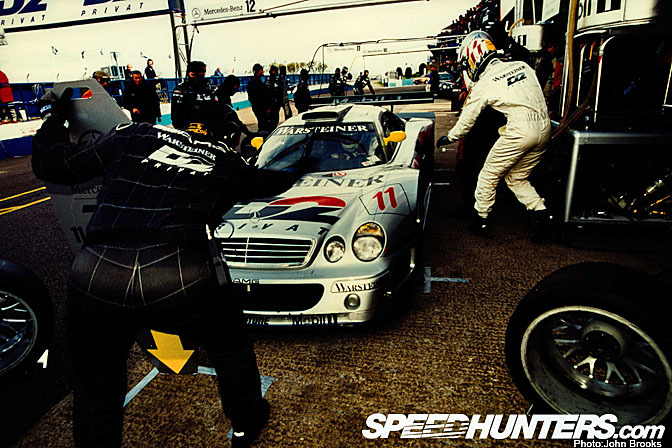
The Mercedes Benz CLK GTR was built in just 128 days from the first drawings to the finishing of the first car. They had even acquired a McLaren F1 GTR and ran it at Jarama to see what the opposition was all about. They also took that opportunity to try out some new bodywork. It would be total war from the Stuttgart effort.
So April 1997 saw us all assemble at the Hockenheimring for the first round of the FIA GT Championship.
I wrote about this earlier:
"Leading the charge against the Woking/Munich alliance was AMG Mercedes. They produced a pure race car, the CLK GTR. It featured a carbon fiber tub built by Lola Composites, with a full competition suspension system all topped off by a 6 litre, V12 engine that was light and powerful. The cars were run by the AMG team and initially the drivers were Bernd Schneider, Alexander Wurz, Alessandro Nannini and Marcel Tiemann. Later a third car was added with drivers of the calibre of Klaus Ludwig, Greg Moore, Bernd Maylander, Aguri Suzuki and even Ralf Schumacher."
http://www.speedhunters.com/?p=2792
http://www.speedhunters.com/?p=2803
These two features will tell you the story of the 1997 campaign from the McLaren/BMW side.
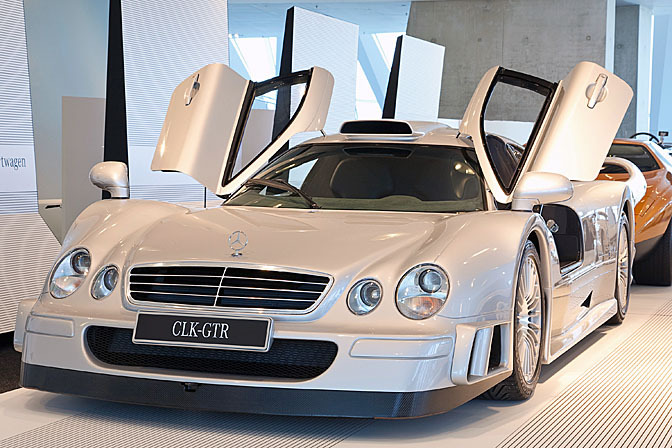
There was a serpent in the Garden, however, that would destroy the GT1 concept in a short space of time.
From my previous article:
As ever it was a dispute over the small print.
The official yearbook from 1997 gives a definition of what a GT car was, presumably this was approved by the FIA prior to publication. I quote…………….
A Grand Touring car is an open or closed automobile which has no more than one door on each side, has no more than four seats, is fully legal for road use and has been modified to ensure suitablity for speed races on circuits or closed courses. A GT car is a road car adapted for racing and not a racing car adapted for the road……….the car must be genuinely designed and built for use on the road. To ensure the validity of the rule the FIA further insists that all cars taking part in the GT Championship must be properly homologated for road use……….
Pretty clear then, even a simple soul like me can see that you take a road car and tune it up and go racing. Ok you might not take the base model food shopping but you can see where the line is drawn. Or can you?
Some of the more restless of you will be wondering what the old fool is banging on about, let's get racing, come on!
All in good time. In order to build a road car, even one destined primarily for the tracks, and get it homologated by the relevant authorities there are certain choices that would not be taken if you were aiming to build a pure race car.
There were other conditions to be met, once again, Gordon Murray. "To comply with the regulations as written we had to build a new road car, sell one a month before the first race, have dealers, brochures and parts back-up for it. I went to Ron (Dennis) for a budget to do just that and actually started the wind tunnel programme before I'd got the go-ahead."
April's cruelty to the FIA GT Championship back in 1997 was two fold. Quietly the FIA altered the regulation demanding full homologation prior to the start of the season, setting a deadline of the last day of the year instead. Utterly ridiculous, what sanctions would the FIA be able to apply to the likes of Mercedes Benz if the road car did not fully comply with the rules? Ask for the trophies back, re-bottle the Champagne? Madness, madness. The change did not only help Stuttgart but also Panoz and Lotus.
Mercedes did build a road car but only after the 1997 season was done, indeed some 25 examples were sold, though with a price tag at the time of $1,547,620 the likes of me need not apply.
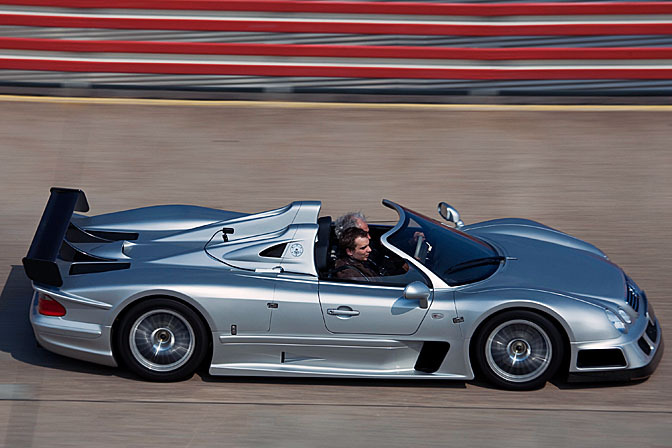
There were even six roadsters built by AMG. The road car had a bigger engine, 6.8 litres, and offered aircon as an extra, not on the topless cars I guess.
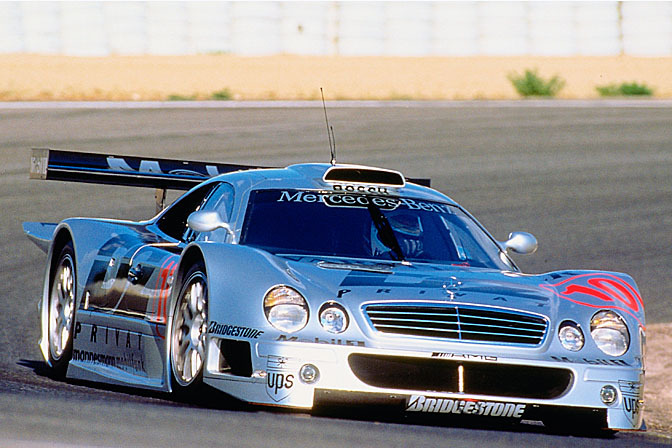
AMG Mercedes were ruthless in their pursuit of the Titles. Bernd Schneider was swapped around depending on which car looked like it might be best placed. The CLK GTR was the class of the field, so it was greatly to Schnitzer and BMW's credit that they kept the pressure up until the last race but the Silver Arrows and their favoured son would not be denied.
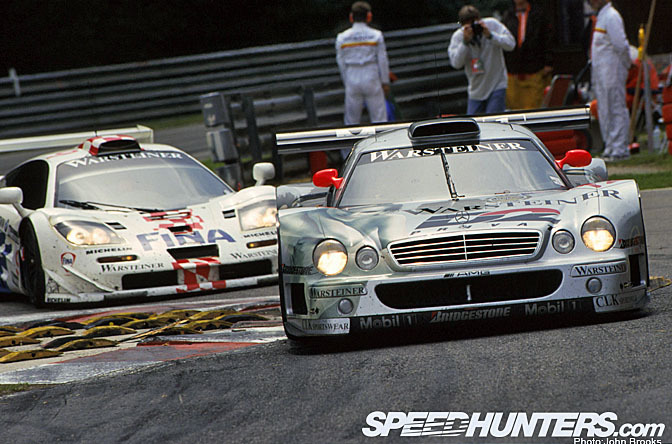
The score sheet showed six wins for Stuttgart, five for Munich, so the spoils went to Schneider and AMG Mercedes. The manner of victory did not sit well with BMW who decided that a prototype would be the answer to the Le Mans question.
As you can see……………
http://www.speedhunters.com/?p=2747
http://www.speedhunters.com/?p=2752
http://www.speedhunters.com/?p=2763
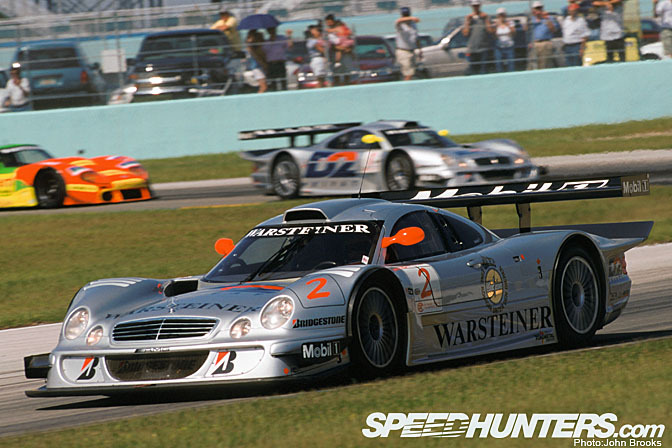
The 1998 FIA GT Championship was a very different animal from the previous year. Lotus and all the privateer GT1 teams had gone but Porsche stepped up to the plate with the GT1 98.
http://www.speedhunters.com/?p=4169
However this was the automotive equivalent of showing up with a knife to gun fight………………..except at Le Mans.
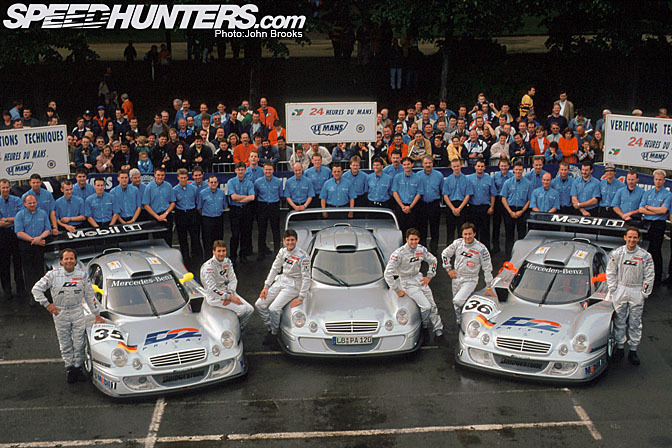
In France AMG Mercedes decided to bring out a new car, the CLK LM. The major change was to go from a V12 to a V8 using a development of the engine that had featured so strongly in the Sauber Group C cars some eight years earlier.
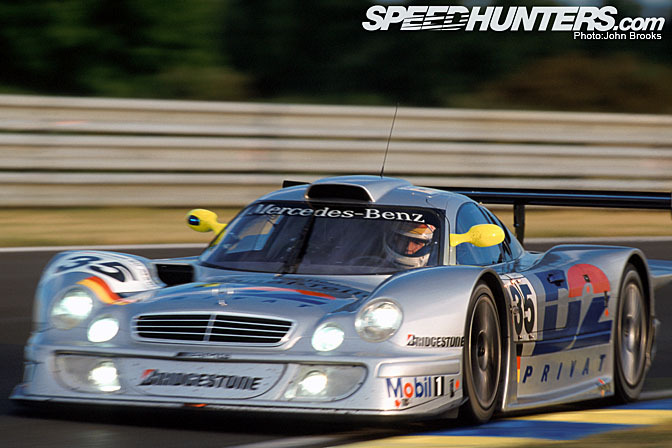
A very strong squad was assembled backed up by the ace AMG team, #35 had Mark Webber and Klaus Ludwig to partner Bernd Schneider. In #36 1993 winner Christophe Bouchut was paired with Jean Marc Gounon and Ricardo Zonta.
First blood went to Schneider who took pole with a lap of 3:35.544, Bouchut was third just over a second adrift. Things looked promising for the Silver Arrows.
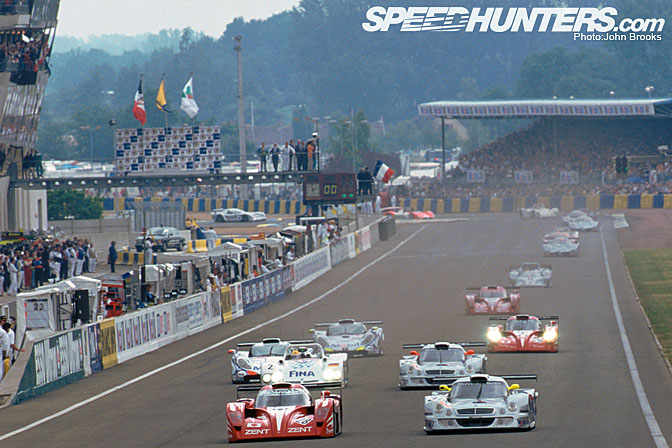
The flag was waved and battle commenced with Schneider hold the lead for the first half lap, thereafter Martin Brundle in the Toyota GT-ONE breezed past down the Mulsanne Straight, it was game on.
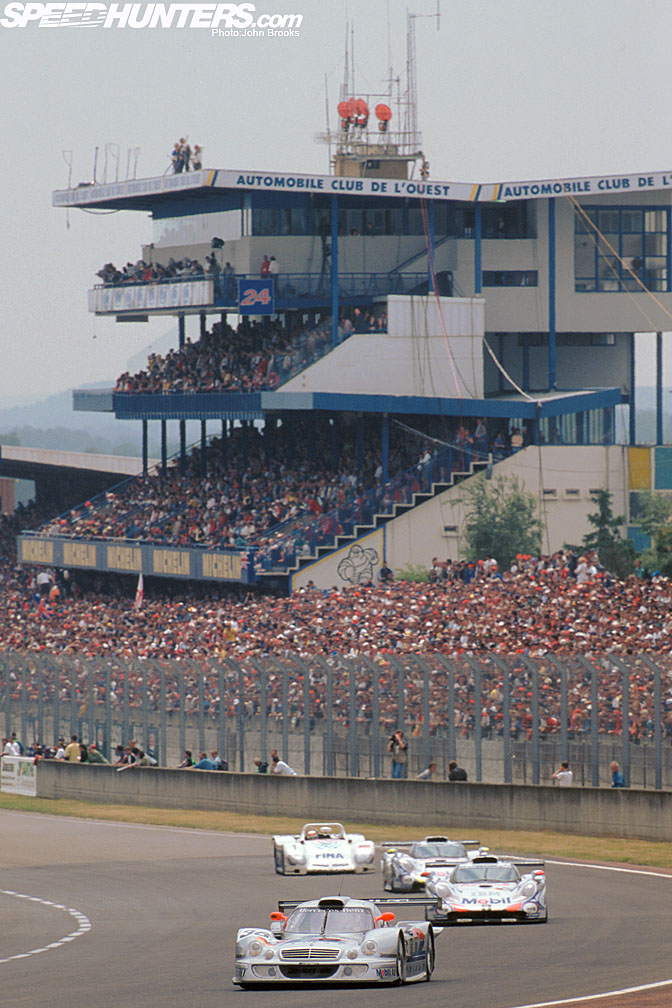
While #35 chased the GT-ONEs of Brundle and Boutsen, #36 tried a different approach, running a relatively conservative first stint, being the last of the leaders to stop. Fuel economy is as important at Le Mans as outright speed, so this was the team hedging their bets.
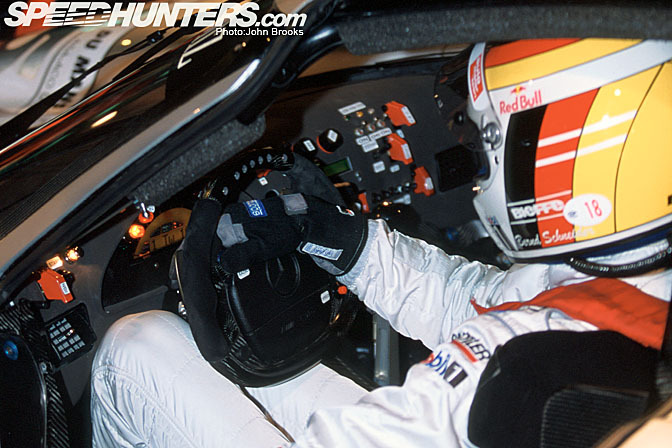
19 laps into the race the unthinkable happened to #35, it stopped just after the pit exit. A pin had failed in the power steering oil pump and the engine's hydraulic system was fatally damaged. One down.
Thirty minutes later #36 stopped at the pits with the same problem. Game over.
It was the worst nightmare that a professional factory team like AMG Mercedes Benz could suffer. It was small comfort to them to see BMW and Toyota endure similar equipment failure.
The Silver Arrows would be back, this time there would be no mistakes.
John Brooks
Part 2 tomorrow.
Non attributed images courtesy of and copyright Daimler Benz.






Please keep up the fantastic work on these retrospectives. Fascinating insights into some of the most amazing cars and periods of racing history.
thank you!
Please Dektops as picture number !
Please !!!
I was lucky enough to see the cars run at Laguna Seca in '97, Beautiful cars, and if I ever get F.U. money, I will own one.
I love reading about the race cars of yesterday, thanks for the article.
this car was a childhood hero to me. its so heartwarming to finally find out a little history about it.
it seems that every amg or mercedes car that has gone racing...has always managed to look absolutely evil. Congrats. Thanks John, cant wait for tomorrow
Always have said, sexiest Merc ever made. The roadster is beyond belief...didn't know they made any!
Hah. Look at the early Redbull sponsorship on Bernd Schneider's helmet.
desktop of pic #4 please
this is when le mans was super cool
Another good time to be had while it lasted........
Mercedes doesnt understand the sheer engeneering and perfection that this car offered. I was fortunate enough to catch a LM24H race with the CLK's in it. It's not something you forget. The sound of it hitting the rev limiter was one of the most evocitive noises i have ever heard in my life. I will never forget the moment where the CLK took a turn too wide and ended up powersliding a bit on the corner. That was beyond words. And Mercedes shuns the CLK? It just doesnt seem fair.
Thanks so much for the great article John, looking forwards to part 2.
Desktop as Picture number 4 Please !!!
its an historic car.. an all time classic - 'nuff said!
Thank you, Jonh, Best Retrospective
It's all in the details................. Three days running around the grounds of Goodwood House
What started in a volcano ended in a volcano: the ash from the Icelandic volcano in April to the Argentinian
What started in a volcano ended in a volcano: the ash from the Icelandic volcano in April to the Argentinian
It's year two of the FIA GT1 World Championship. In 2011 some things are the same, but some things
Some as to answer me this are there to types of v8 one that ran in Le mans and one that rain the fia that a answers that I been trying to get ever where I'm not talking about the v12